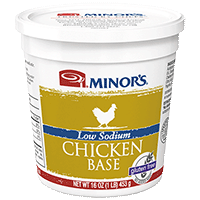Psychologists say that if you read, hear or see something often enough, you’ll begin to believe it’s true. Those who manufacture monosodium glutamate (a.k.a. MSG), clearly understand that and have developed cozy relationships (or used other tactics) to influence practically anyone and everyone who has the eyes or ears of consumers. The intent is to promote the message that MSG is a harmless (or even safe) food additive by repeating that mantra over and over again for the public to see, hear, and absorb. Their targets are online “influencers,” those who write for, or are mentioned in, print and internet media, Facebook, Twitter, all other social media outlets, magazines of every description, and, yes, medical journals.
Targets have included celebrity doctors such as Andrew Weil, M.D., respected educational institutions such as Yale, large media outlets like The Washington Post, The New York Times, and the BBC, popular information sources like Food Navigator, and, of course, industry’s lap dog, the FDA.
You probably haven’t noticed all the propaganda being put forth to gain your trust. You’re supposed to absorb it, not notice or analyze it. And those who manage the many glutamate-industry agents who inform you that MSG is harmless or beneficial have successfully worked their con game into a science.
Authors are of all descriptions, some well-known, others not. Some will use assumed names. Some contribute only one article on the harmless nature of MSG, while others like Yvette d’Entremont appear to have a cottage industry going with multiple blogs and podcasts not only about the “safety” of MSG, but about the safety of other toxic substances such as Roundup.
Finding a way to get the word or concept “science” in front of the reader appears to be particularly popular, as if that somehow guarantees that something scientifically proven will be included in the presentation. “Science Friday” and “SciBabe” are two examples.
The following list of writers who have published or endorsed glutamate propaganda is far from complete, but it does represent how far and wide industry has been able to send forth its messaging to the public.
Author, publisher, title of article
Grant Achatz, chef
Interviewed by First We Feast:
“Grant Achatz Doesn’t Go Anywhere Without a Bottle of MSG, and Here’s Why”
Interviewed by msgdish (website of The Glutamate Association):
“Chef Grant Achatz takes MSG to the Test Kitchen”
Donovan Alexander
Appeared in Interesting Engineering:
“MSG makes food taste delicious, but is it actually safe?”
Toby Amidor, MS, RD
Appeared in U.S. News & World Report:
“Scientists have known MSG is safe for decades. Why don’t most Americans?”
Appeared in SHAPE:
“The truth about whether MSG is bad for you”
Quoted in Today’s Dietitian:
“A fresh look at MSG”
Quoted in Food News:
“Why are you still afraid of MSG?”
Elisabeth Anderson
Appeared in Michigan State University Center for Research on Ingredient Safety 101 Series:
“Monosodium Glutamate”
Keith-Thomas Ayoob, EdD, RD, FADA
Appeared in MSGdish (website of The Glutamate Association):
“Serving science about MSG”
Tiffany Ayuda, former senior editor at Prevention and Eat This, Not That
Appeared in Livestrong.com:
“The verdict on MSG: Is it really safe to eat and where is it lurking?”
Anna Maria Barry-Jester, formerly with ABC News and the Center for Public Integrity
Appeared in FiveThirtyEight:
“How MSG got a bad rap: Flawed science and xenophobia”
April Benshosan
Appeared in Livestrong.com:
“Everything you need to know about food ingredients and additives“
Michael Blanding
Appeared in Colgate Magazine:
“The strange Case of Dr.Ho Man Kwok”
Heston Blumenthal
Referred to in First We Feast:
“Grant Achatz Doesn’t Go Anywhere Without a Bottle of MSG, and Here’s Why”
Joanna Blythman
Appeared in The Guardian:
“Chinese restaurant syndrome: Has MSG been unfairly demonized?”
Aaron E. Carroll
Appeared in The New York Times:
“Relax, you don’t need to ‘eat clean’”
Lydia Chain
Appeared in ScienceLine:
“MSG: Just some extra umami oomph”
David Chang, American restaurateur, author, television personality, and founder of the Momofuku restaurant group
Referred to in First We Feast:
“Grant Achatz Doesn’t Go Anywhere Without a Bottle of MSG, and Here’s Why”
Appeared on Eater:
“Watch David Chang’s MAD Talk on the Stigma of MSG”
Mary Lee Chin, MS, RD
Appeared in MSGDish (website of The Glutamate Association):
“If MSG is so bad for you, why doesn’t everyone in China have a headache?”
“Breaking down the truth about MSG safety: Is MSG bad for you?”
“YES to cooking at home and answers to “how to use MSG?”
Chin has also contributed to numerous podcasts, articles and blogs providing her “expert” opinion on the “safety” of MSG. She is a consultant to Ajinomoto, Bayer (which acquired Monsanto), and others, specializing in “provocative nutrition topics.”
Stefan Chin, SciShow producer
Video presentation for SciShow:
“The truth about MSG and your health”
On January 28, 2019, the SciShow on YouTube, hosted by Stefan Chin, gave us one of the finest examples of glutamate-industry propaganda seen to date, designed to convince its audience that monosodium glutamate is a harmless food additive. Chin’s recipe for deception is classic.
Bethany Jean Clement, Seattle Times food writer
Appeared in the Seattle Times:
“To MSG or not to MSG? That is the question”
River Davis, Wall Street Journal staff writer
Appeared in the Wall Street Journal:
“Rescuing MSG’s unsavory reputation”
The article headline changed shortly after publication to:
“The FDA says it’s safe, so feel free to say ‘yes’ to MSG”
Signe Dean, ScienceAlert.com managing editor
Appeared in Science Alert:
“This simple video breaks down the real truth about MSG safety, with science”
Carrie Dennett
Appeared in The Seattle Times:
“Avoiding MSG? Look beyond the myths”
Appeared in The Beacon:
“A second look at MSG corrects the record”
Yvette d’Entremont, a.k.a. “SciBabe”
Appeared in Self:
“We all really need to stop freaking out about MSG”
“No more freaking out about MSG”
Caitlin Dewey, specialist in “digital deceptions”
Appeared in The Washington Post:
“Why some Americans avoid MSG even though its ‘health effects’ have been debunked”
Sarah Dickerman
Appeared in Slate:
“Could MSG make a comeback?”
Martin Downs, MPH
Appeared in WebMD:
“The truth about 7 common food additives”
Elizabeth G. Dunn
Appeared in The Wall Street Journal:
“From MSG scare to MVP status: How we learned to love umami”
Yara Elmjoule
Appeared on Facebook and YouTube:
“Stop blaming MSG for your headaches”
Greg Foot, science broadcaster on BBC
Appeared on BBC Earth Lab:
“What is MSG?” (A video presentation)
Sarah Garone, NDTR
Appeared in Today’s Dietician:
“A fresh look at MSG”
Natasha Geiling
Appeared in Smithsonian.com:
“It’s the umami, stupid. Why the truth about MSG is so easy to swallow”
Michael Kerr and Rena Goldman
Appeared in Healthline:
“What is an MSG allergy?”
Amanda Green
Appeared in Decoding Delicious:
“What is MSG, and is it safe to eat?”
Veronique Greenwood
Appeared in BBC Future:
“The man who discovered umami”
Annaliese Griffin, editor, Quartz Daily Obsession
Appeared in Quartz:
“The persistent, racist myth of “Chinese restaurant syndrome” just won’t die”
Marie Haaland
Appeared in SWNS:
“Research finds that close to half of millennials believed these debunked food myths”
Appeared in The New York Post:
“The top ‘food myths’ we have all fallen for”
Bridget Hallinan
Appeared in Food&Wine:
“New Campaign Calls on Merriam-Webster to Redefine ‘Chinese restaurant syndrome’“
Tim Hayward
Appeared in Financial Times:
“OMG I love MSG”
Theresa Hedrick, MS, RD
Appeared in MSGdish (website of the Glutamate Association):
“Is MSG Natural? How is MSG made?”
“Is MSG addictive?”
Hannah Hempenstall
Appeared in Better Homes and Gardens:
“Everything you need to know about MSG”
Liz Highleyman
Appeared in MedPage Today:
“Patients often mistake migraine ‘triggers’”
Eddie Huang, actor, restauranteur, chef
Interviewed by NBC News:
“Eddie Huang on racial insensitivities behind MSG, Chinese food criticisms”
Interviewed by Finedininglovers.com:
“Why ‘Chinese restaurant syndrome’ is BS!”
Interviewed by The New York Times:
“The campaign to redefine ‘Chinese restaurant syndrome’”
Interviewed by Vice:
“People are fighting to change an anti-MSG term in the Merriam-Webster dictionary”
Interviewed by HeraldNet, Everett, Washington:
“Asians cringe at ‘Chinese restaurant syndrome’ in dictionary”
Michael Hull
Appeared in Examine.com:
“Is MSG (monosodium glutamate) bad for your health?”
Erin Kelly
Appeared in Thrillist.com:
“Is MSG actually terrible for you?”
Hannah Kerns
Appeared in SheFinds:
“The One Food No One Should Be Eating Anymore In 2020 Because It’s SO Bad For You”
Michael Kerr and Rena Goldman
Appeared in Healthline:
“What is an MSG Allergy?”
Sylvia Klinger, DBA, MS, RD, LDN, CPT
Appeared in MSGdish.com (website of The Glutamate Association):
“Secrets of tasty Latin American cuisine with an umami boost”
Chris Koetke, chef
Appeared in SOUNDBITESRD:
“THE ART & SCIENCE OF MSG & UMAMI”
Appeared in MSGdish (website of The Glutamate Association):
“Do’s and don’ts of using MSG in cooking”
Chris Koetke actively promotes MSG on the MSGdish YouTube Channel. There are 19 links to this article listed on Google.
Becky Krystal, Washington Post food reporter
Appeared in The Washington Post:
“Embrace umami and learn to add its savory goodness to your foods”
Appeared in GoodFood:
“What’s the deal with …umami? (and how to add its savoury goodness to your cooking)”
Sally Kuzemchak, MS, RD
Appeared in WebMD:
“Is MSG really so bad?”
Keng Lam, MD
Appeared in The Berkeley Wellness Letter:
“Is MSG safe?”
“Is MSG (monosodium glutamate) bad for you?”
Abby Langer
Appeared in Chatelaine:
“Everything you think you know about MSG is wrong”
Appeared on Twitter:
“MSG is completely safe”
Elizabeth Laseter, digital editor, Whole Foods Market
Appeared in Allrecipes:
“What is MSG (monosodium glutamate) – and is it safe to eat?”
Joe Leech, MS
Appeared in Healthline:
“MSG (monosodium glutamate): Good or bad?”
John Lehndorff
Appeared in Boulder Weekly:
“Umami: The next level”
Anthea Levi
Appeared in Eat This, Not That!:
“Is MSG actually bad for you?”
Michelle Liang ’23 (A Duke student)
Appeared in DukeArts:
“From MSG to COVID-19: The politics of America’s fear of Chinese food”
Kevin Loria
Appeared in Business Insider:
“Is MSG sodium in Chinese food safe to eat?”
Claire Lower
Appeared in Lifehacker Skillet:
“Put MSG in everything, you cowards”
Fiona Lu, University of Chicago Booth School of Business undergraduate student
Appeared in UChicago Bite:
“Demystifying MSG”
Gus Lubin
Appeared in Business Insider:
“Everyone should cook with MSG, says food scientist”
Hillary Maglin, Travel + Leisure Magazine assistant editor
Appeared in Rachael Ray Every Day:
“Surprise: MSG has been completely safe to eat all this time”
John Mahoney
Appeared in Buzzfeed:
“The notorious MSG’s unlikely formula for success”
Jeannie Mai, TV host and celebrity stylist
Appeared in adweek.com:
“Celebrities Want to Redefine ‘Chinese Restaurant Syndrome’”
Appeared in arkansasonline.com:
“Bid starts to redefine ‘Chinese restaurant syndrome’”
Appeared in NBC News:
“Eddie Huang on racial insensitivities behind MSG, Chinese food criticisms”
Appeared in adage.com:
“MSG maker starts campaign aimed at debunking ‘Chinese restaurant syndrome”
Appeared in Federal News Network:
“Merriam-Webster revises ‘Chinese restaurant syndrome’ entry”
Appeared in Food&Wine:
“New Campaign Calls on Merriam-Webster to Redefine ‘Chinese restaurant syndrome’”
Appeared in ABC News:
“Asians cringe at ‘Chinese restaurant syndrome’ in dictionary”
Appeared in ABC News:
“Merriam-Webster revises ‘Chinese restaurant syndrome’”
Appeared in bbc.com:
“’Chinese Restaurant Syndrome’ – what is it and is it racist?”
These articles feature Jeannie Mai’s participation in the Ajinomoto campaign dubbed “Redefine CRS.”
Darwin Malicdem
Appeared in Medical Daily:
“Does MSG have negative effect on brain health?”
Denise Mann, MS
Appeared in The Healthy:
“What is MSG – and how bad is it, really?”
Selvi Megawati
Appeared in We Think We Share:
“Umami: The fifth taste after eating foods that contain MSG”
Chris Mohr, PHD, RD, “nutrition expert”
Appeared in Men’s Health:
“Is MSG bad for you? No – and here’s why.”
Carla Lalli Music, Bon Appetit food director
Appeared in Bon Appetit and Yahoo! News:
“Give MSG a chance – really”
Interviewed for Salon:
“BonAp food boss Carla Lalli-Music: Not only is MSG okay, it is a core staple in the pantry”
Myupchar
Appeared in Firstpost:
“Monosodium Glutamate (MSG) in your food: Is it really as bad as some experts claim?”
Jill Neimark
Appeared in BrainFacts:
“Umami: The fifth taste”
Amelia Nierenberg, NYT reporter on the “Food Desk”
Appeared in The New York Times and The World News:
“The campaign to redefine ‘Chinese Restaurant syndrome’”
Bianca Nogrady
Appeared in BBC Future:
“Is MSG as bad as it’s made out to be?”
Karen Palmer
Appeared in Tasting Table:
“OMG MSG Great chefs love the umami-rich powder, and so should you”
Tia Rains, Ajinomoto Co. Inc., senior director, public relations
Appeared in Sound Bites:
“The art and science of MSG & Umami”
Appeared in Ajinomoto, Eat Well Live Well:
“Busting nutrition myths: Tia Rains built her career correcting misconceptions around food”
Tia Rains is heading up Ajinomoto’s US $10-million, three-year PR blitz.
Ryan Raman, MS, RD
Appeared in EcoWatch (via Healthline):
“Does MSG cause headaches?”
Michele Redmond, MS, RDN
Appeared in Food & Nutrition (also republished in MSGDish (website of the glutamate association):
“Make low-salt cooking taste amazing with an umami boost”
Monica Reinagel, MS, LDN
Appeared in MyFitnessPal:
“Is MSG safe?”
Alex Renton
Appeared in The Guardian:
“If MSG is so bad for you, why doesn’t everyone in Asia have a headache?”
Helen Rosner, roving food correspondent for The New Yorker
Appeared in The New Yorker:
“An MSG convert visits the high church of umami”
“Last month, on a visit to Tokyo, I spent a morning paying my respects at the altar of umami, … the production headquarters of Ajinomoto…”
Joanna Rothkopf, writer, actress
Appeared in Esquire:
“It’s time for America to fall back in love with MSG”
This was one of the numerous articles authored by attendees of the World Umami Forum, put together by Ajinomoto in September 2018.
Jackson Ryan
Appeared in Lifehacker.com:
“Is MSG Really That Bad For You?”
Atsuko Sasaki
Appeared in the Academy of Nutrition and Dietetics, Eat Right:
“Umami. The science and lore of healthy eating”
Ruth Schuster
Appeared in Harretz:
“MSG-spiked Soup Helps Make Better Food Choices, Says Report”
Kavin Senapathy, SciMom
Senapathy is co-author of a book, “The Fear Babe: Shattering Vani Hari’s Glass House,” published in October 2015 by Senapath Press. The book promotes genetically engineered foods, claims aspartame and MSG are safe, and purports to explain the “facts behind those toxic pesticide scares.”
Abbey Sharp, in sponsored partnership with Ajinomoto
Appeared in Abbey’s Kitchen:
“MSG effects and claims debunked – Does MSG cause headaches?”
Alexandra Sifferlin
Appeared in Time:
“Eat umami, eat less”
Beth Skwarecki
Appeared in Lifehacker:
“Stop being afraid of MSG”
Elizabeth Somer, MA, RD
Appeared in WebMD:
“Does Chinese food give you a headache?”
Mary Ellen Shoup
Appeared in FoodNavigator-USA.com:
“Study looks at reducing sodium intake through MSG substitution in saltiest food categories”
T.L. Stanley
Appeared in AdWeek:
“The Company Behind MSG Urges Merriam-Webster to Drop ‘Chinese Restaurant Syndrome’”
Mark Stock, writer, wine expert
Appeared in The Manual:
“What is MSG why do we argue about it?”
Terry Tang
Appeared in the Arkansas Democrat Gazette:
“Bid starts to redefine ‘Chinese restaurant syndrome’”
Appeared in AP News:
“Asians cringe at ‘Chinese restaurant syndrome’ in dictionary”
Kaye Taylor, MS
Appeared in MSGdish (website of The Glutamate Association):
“Here’s the lowdown: How MSG makes foods taste better”
“Treat your family to a picnic with savory picnic salads”
“It’s spring: Time to lighten up serious food talk!”
“8 tips for using MSG in cooking and in recipes”
Carlene Thomas, RDN
Appeared in OhCarlene healthfullyeverafter.co:
“Is MSG safe? Umami 101: Everything you want to know about MSG safety, health and the facts”
Amy Toffelmire
Appeared in medbroadcast.com:
“MSG: Is monosodium glutamate safe?”
Archit Tripathi
Appeared in didyouknowfacts.com:
“Is MSG really a toxic food?”
Chau Tu, Slate Plus associate editor
Appeared in The World:
“Science suggests MSG really isn’t bad for your health after all”
Appeared in Science Friday:
“Is MSG bad for your health?”
Robin Tucker, Michigan State University assistant professor of food science and human nutrition
Interviewed by PBS station WKAR “Serving up science”:
“Umami: The most complex taste
Dr. Taylor Wallace, self-described as “America’s favorite food scientist”
Appeared in drtaylorwallace.com:
“Sensitive to MSG? Guess what…you’re not!”
Karla Walsh
Appeared in Better Homes & Gardens:
“Yes, MSG is safe to eat, plus everything else to know about the flavor enhancer”
Andrew Weil, M.D.
Appeared in drweil.com:
“How safe is MSG?”
Corey Williams
Appeared in Yahoo! Life:
“What is umami and what does it taste like?”
Marguerite Winter
Appeared in Financial Review:
“So much more to umami than taste”
Dr. Steve Witherly, “food scientist”
Interviewed by Business Insider:
“Everyone should cook with MSG, says food scientist”
Sam Wong, New Scientist digital reporter
Appeared in NewScientist:
“Umami: How to maximise the savoury taste that makes food so satisfying”
Renee Wu
Appeared in Yale Scientific:
“Is MSG bad for you?”
Judith Wurtman, Ph.D.
Appeared in Psychology Today:
“Monosodium Glutamate: Will It Make Us Eat More or Less?”
Connie Xu
Appeared in Spoonuniversity.com:
“Everything you need to know about MSG”
Kimmy Yam
Appeared in NBC News:
“Eddie Huang on racial insensitivities behind MSG, Chinese food criticisms”
Jessie Yeung, CNN Digital Worldwide digital producer
Appeared in CNN:
“MSG in Chinese food isn’t unhealthy – you’re just racist, activists say”
Althea Zanecosky, MS, RD, LDN
Appeared in MSGdish (website of The Glutamate Association):
“Good taste. Bad taste. No taste.”
“Stop the food label fear-mongering”
Katherine Zeratsky, R.D., L.D.
Appeared in Mayoclinic.org:
“What is MSG? Is it bad for you?”
Publications with no author listed
Appeared in the Associated Press:
“Merriam-Webster revises ‘Chinese restaurant syndrome’ entry”
Appeared in New York Times Ad Age:
“MSG Maker starts campaign aimed at debunking ‘Chinese Restaurant Syndrome’”
Appeared in Independent Newspapers Limited (Nigeria):
”WASCO Sensitises Media On Safety Of Ajinomoto”
Appeared in Unilever Food Solutions:
“Myths and Facts on MSG” (Chef training and resources)
Participants in the World Umami Forum, September 2018
EVENT HOST
Andrew Zimmern, Master of Ceremonies
Celebrity Chef & TV Personality
PRESENTERS
Gary K. Beauchamp, PhD, Distinguished Member, Emeritus Director and President, Monell Chemical Senses Center
(Beauchamp has been turning out studies for Ajinomoto at Monell since 1968.)
Ali Bouzari, PhD Chief Science Officer, Pilot R&D
Chris Koetke, Chef, CEO, Complete Culinary, LLC
Sarah Lohman, Historic Gastronomist & Author
Kumiko Ninomiya, PhD, Director, Umami Information Center, Executive Fellow, Ajinomoto Co., Inc.
Jordan Sand, PhD, Professor of Japanese History and Culture, Georgetown University
(Sand wrote a very nice history of MSG. Interesting to note that there was no mention that some people found it toxic.)
Nadia Berenstein, PhD, Food Historian & Writer
Lisa Watson, MS, Senior Science Advisor, MS, The Glutamate Association
PANELISTS
Harold McGee, Food Science Write
Dan Pashman, Host, The Sporkful Podcast
Mary Lee Chin, MS, RD, Health Communicator, Nutrition Edge Communications
Jason Riis, PhD, Senior Research Fellow, Wharton School, University of Pennsylvania
Tia M. Rains, PhD, Senior Director of Public Relations, Ajinomoto Health & Nutrition North America, Inc





































































